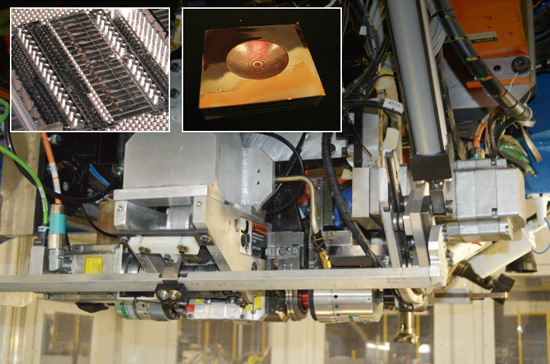Photo Credit: Laika
3D printing in full color can be challenging when color matching is a top priority. As RapidMade and our Portland neighbors at Laika can attest, "what you see" is not necessarily "what you get..." It takes expertise to ensure a client's color choices translate well from the CAD files to the Color Jet 3D printer.
Laika Entertainment, a stop-motion animation studio, has been using Color Jet printers to create characters for its feature films including Boxtrolls and ParNorman. By necessity, Tory Bryant, its in-house specialist, has learned to master the nuances of its various printers to maximize color control.
Her first lesson? The 3D printer likes blues and greens, flesh tones - not so much - which, given the work Laika does, is an obvious challenge. And so began a process that led them to develop a process to ensure quality control.
The following excerpt is courtesy of Creativeblog.com
Create a color-matching book:
This technique is difficult for anyone without direct access to a 3D printer...
“Tory printed every Pantone colour formula with the 3D printer. She painted the same formula on the computer screen. Then she compared the two and figured out the digital formula she needed to match the printer’s colour.
’A blue on the screen might be green in the printed material,’ she says. ‘I needed to trust that if I followed the rule, in the end, I would get the result I was looking for. I have to be very methodical.’”
Use colors to enhance details:
Manipulating the files prior to printing is strongly recommended.
“To enhance edges and pop details, Tory uses complementary colours. ‘Lips can go orangey-red,’ she says. ‘So, if I want bright red lips, I put green with a little blue on the edge of the lip line. Our eyes read the lips as brighter and more vibrant. Sometimes I put a bright yellow around a freckle. Having elements around the freckle keeps the print heads active, so I get sharper edges and cleaner colour.’”
Paint on the inside:
Use a multilayered technique to create "depth and detail."
“ ‘The powder-based material is translucent,” she says. “I could paint on the back and have it bleed through as the front bleeds into it. I created veining on Snatcher’s face, blush in the cheeks, elements that come in and out of his face.’”
The impact of thick and thin:
Recognize that darker colors are applied more deeply than lighter colors and factor this into your design.
Check the file format:
File compression can result in lost information which produces poor quality prints.
This is one reason you should select your printing provider with care. Many will simply print what you send them without first evaluating the print-readiness and quality of your files. RapidMade always reviews files and identifies problems before the print is made. In addition to color issues, part thickness can also be a problem that requires redesign.
We would also recommend you consider your printer choice. When the outcome matters, choose an industrial-grade machine like ours which has:
Full color, ceramic-like composite material
a turn-around time as little as a single day.
A full palette of over 390,000 colors
If you have a figurine or model you'd like to get printed in color, learn more.



















